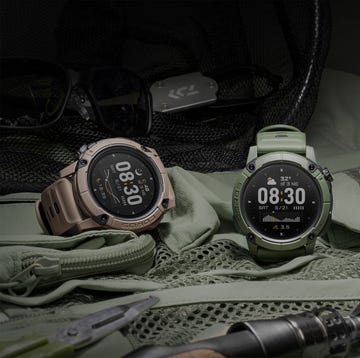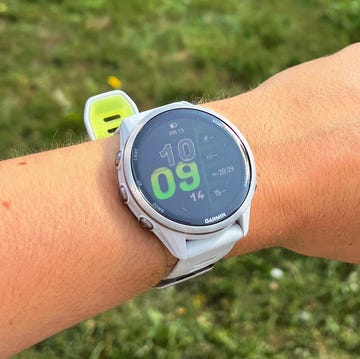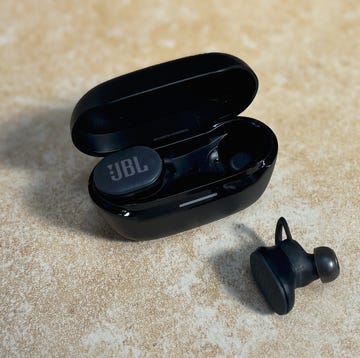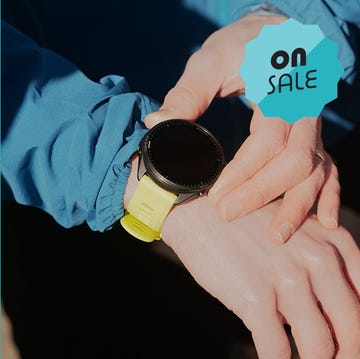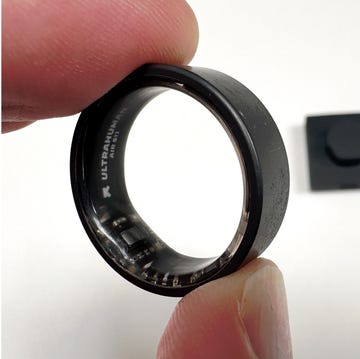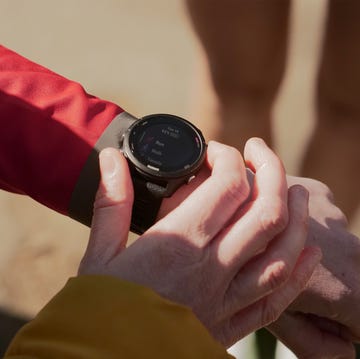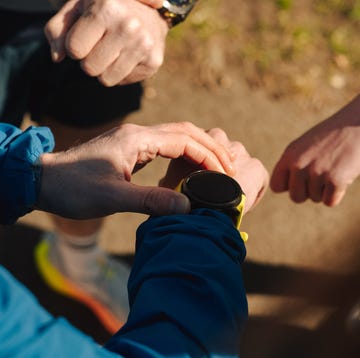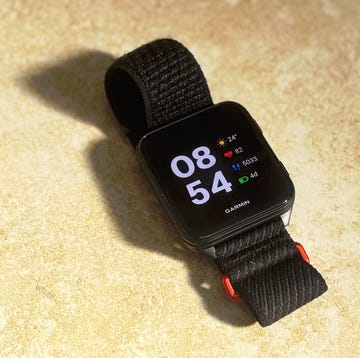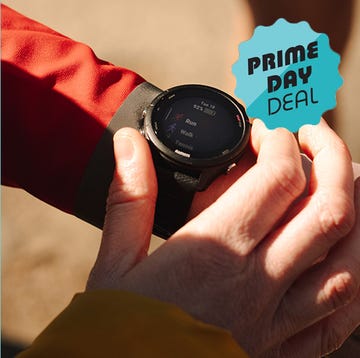In Garmin's extensive line-up of gadgets, the Vivoactive sits as one of the brand’s more approachable watches – a hybrid of fitness tracker and smartwatch and a more affordable alternative to the Venu 3. If the Venu is Garmin’s answer to the Apple Watch, think of the Vivoactive as the brand’s answer to the SE.
But that’s not to say you should disregard the Vivoactive if you're in the market for a new running watch. In fact, the latest version introduces new running metrics and breadcrumb mapping that make it a more capable running tool than its predecessor.
But how does it stack up against Garmin’s Forerunner series, and other similarly-priced watches from the likes of Coros and Polar? I’ve been living and training with the Vivoactive 6 for the past month. Here's what you need to know if you're deciding whether it's right for you.
What everyone's reading
Design
The Vivoactive 6 retails for £279.99 — that's £50 more than it's predecessor, but you are getting a fair few extra features for that price, as I'll come on to discuss. Visually, though, it's not hugely distinguishable from the Vivoactive 5. Both watches have a lightweight, aluminium bezel, a fibre-reinforced polymer case (aka plastic) and a silicone band, which helps to keep the watch at a more wallet-friendly price. You've also got the same 1.2 inch/30.4mm AMOLED display screen as before, which adds a premium feel to the smartwatch. According to Garmin, the display is slightly brighter on the latest version. I certainly found it easy to read in bright daylight, though I did find the screen was prone to smearing with my sweaty fingertips.
Having gone from wearing the Instinct 3 to the Vivoactive 6, the watch feels extremely light on the wrist, weighing just 36g with the silicone strap. For sleep tracking purposes, this is excellent. The case also measures just 10.9mm thick, so if you’re looking for a discreet, slender option, this is a good bet.
In terms of controls, since this is more of a smartwatch than an out-and-out running watch, you benefit from a touchscreen, along with two physical control buttons on the right hand side.
You've also got a choice of four colours: Black/Slate, Bone/Lunar Gold, Jasper Green and Pink Dawn, the latter of which I tested and has earned me a fair few compliments.
Features
The Vivoactive 6 has a packed suite of health and wellness monitoring features, including (but not limited to): wrist-based heart rate, Body Battery, all-day stress, relaxation and movement reminders, meditation, breathwork, sleep coach and even nap detection.
Sleep coach in particular is a favourite of mine. It breaks down your sleep into the different stages and awards you an overall mark out of 100 each day. The feature I've found most useful, however, is ‘Sleep Need’, which calculates how much sleep you should be getting each night based on your activity, stress and recovery levels. I'm currently training for an 100km ultramarathon and my sleep needs have been higher than I expected.
The Vivoactive 6 also introduces a never-seen-before Garmin feature called the ‘smart wake alarm’ tool. This essentially monitors your sleep cycle, analysing patterns in order to wake you up gently in your lightest sleep phase with light vibrations. You don’t need to worry about oversleeping – you pre-select your window, so if you’re still in a deep sleep, the watch will wake you up regardless. Now, this all sounds rather wonderful, but I tried the feature out for a week and found the vibrations a little more buzzy and jarring than expected, waking me up pretty instantly rather than gently as promised. On a couple of occasions, I also woke up before the smart wake alarm – possibly because my body is conditioned to getting up at a certain time. All in all, I didn't find it to be hugely beneficial feature, but then I am very much a Type-A ‘one alarm and up’ person!
When it comes to workouts, there are over 80 activity profiles, plus you can access Garmin Running Coach along with Garmin Coach for pre-built cycling plans and strength. New to the Vivoactive 6 – and Garmin in general – are daily suggested workouts for walking. This was previously only a feature for running or biking on Garmin watches, so it's a nice addition, though not hugely useful if you dedicate a lot of time to running or a particular sport already. You can also download a robust selection of step-by-step workouts for a wider range of activities, including HIIT, yoga, Pilates, mobility and more through Garmin Connect.
In terms of run tracking, you get Treadmill and Indoor Track, along with standard Running, Outdoor Track, Trail Running and Obstacle Running. The Vivoactive 6 also aims to be more of a serious running tool than its predecessor, introducing cadence, stride length, ground contact time and running power analytics.
You also get Garmin’s Pace Pro feature, which offers pace guidance during outdoor runs, plus courses/route following. The latter allows you to create maps within the Garmin Connect app and sync them to your watch for simple breadcrumb navigation and off-course alerts. I trialled this feature on a recent trip to Tokyo, creating a couple of my own custom routes. They were generally easy enough to follow, though routing relies heavily on GPS signal and on a couple of occasions the watch did tell me I was ‘off course’ when I wasn’t, but that's the same for most devices. The top line? If you’re a regular trail runner, you’ll definitely want offline maps, but this is a nice addition for exploring new urban routes. Plus, it’s a feature that the pricer Venu 3 currently lacks – though I suspect this means we’ll be seeing it on the Venu 4 in due course.
Finally, the Vivoactive 6 includes Incident Detection – similar to Apple's Crash/Fall Detection – which automatically contacts loved ones or emergency services if hard impact is detected, plus LiveTrack, which lets you share a real-time location map with loved ones.
Accuracy
The Vivoactive 6 uses the same Global Navigation Satellite System (GNSS) chip as its predecessor, with added support for Beidou and QZSS – in simple terms, these are regional satellite navigation systems that provide enhanced positioning. In general, I found the accuracy to be pretty good, though not quite on par with multi-band GNSS at times. For example, the watch took longer to locate GPS outside my house than the Instinct 3 or Fenix 7. Those inaccurate ‘off course’ alerts in Tokyo would also suggest that the GNSS struggles slightly in very built-up environments, though my Strava maps are all snapped to the route correctly. It's also worth noting that there’s still no barometric altimeter, which determines changes in elevation, limiting the watch’s use for hiking and trail running pursuits.
The Vivoactive 6 uses Garmin’s last-generation heart rate monitor, the Elevate Gen4 Optical HR Sensor, so heart rate variability status isn’t as accurate as the likes of the Fenix 8, but it's still very good.
Battery life
On paper, Garmin says the Vivoactive 6 gets up to 11 days in smartwatch mode and between 17 and 21 hours with GPS.
In practice, the battery life was decent, but it didn’t quite live up to Garmin’s claims. The watch dropped from a full charge to 87% after one day – that was without GPS enabled. A 50-minute run burned roughly 6%, while a 100-minute run burned around 13%. Based on this, I’d say you’re looking at an average GPS burn time of 7% per hour, which should last you just over 14 hours. That’s double the GPS battery life of the Apple Watch SE, but it is slightly under Garmin’s 17-21 hour billing. Throw in daily use, with notifications enabled and sleep tracking, and you’ll get up to a week on a single charge, depending on your mileage.
Who should buy the Vivoactive 6?
A jack of all trades and master of none, the Vivoactive 6 isn't going to turn the heads of hardcore data nerds or high mileage athletes, but if you’re after a do-it-all watch that blends Garmin’s fitness smarts with everyday wearability, it’s a very solid shout.
It's not quite got the chops of the Forerunner 265 or the Coros Pace 3 when it comes to serious run tracking, but it’s far more smartwatch-y than either of those, and not as costly as the sleek Venu 3.
For the £279.99 price tag, you're getting a good-looking AMOLED screen, solid fitness tracking, breadcrumb navigation and a huge suite of wellness tools – all wrapped up in a lightweight, wrist-friendly package. The new running metrics are a nice bonus, too, though the absence of multi-band GPS and a barometric altimeter should deter trail runners and data obsessives.
But for everyday runners, gym goers and those who want a Garmin that can do a bit of everything – and look good doing it – the Vivoactive 6 is a strong, versatile pick that offers great bang for your buck.









